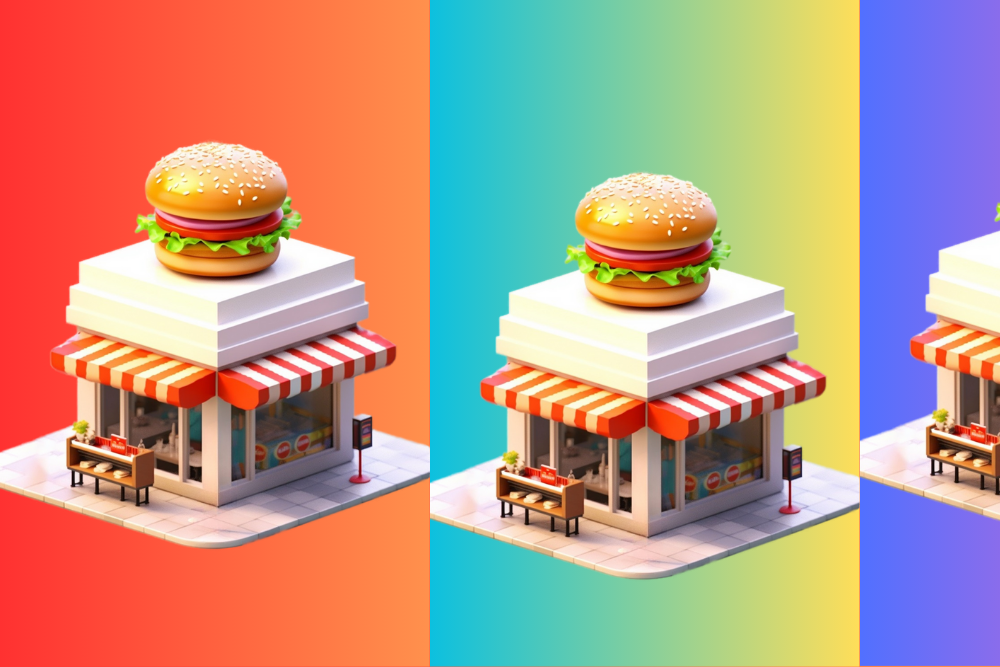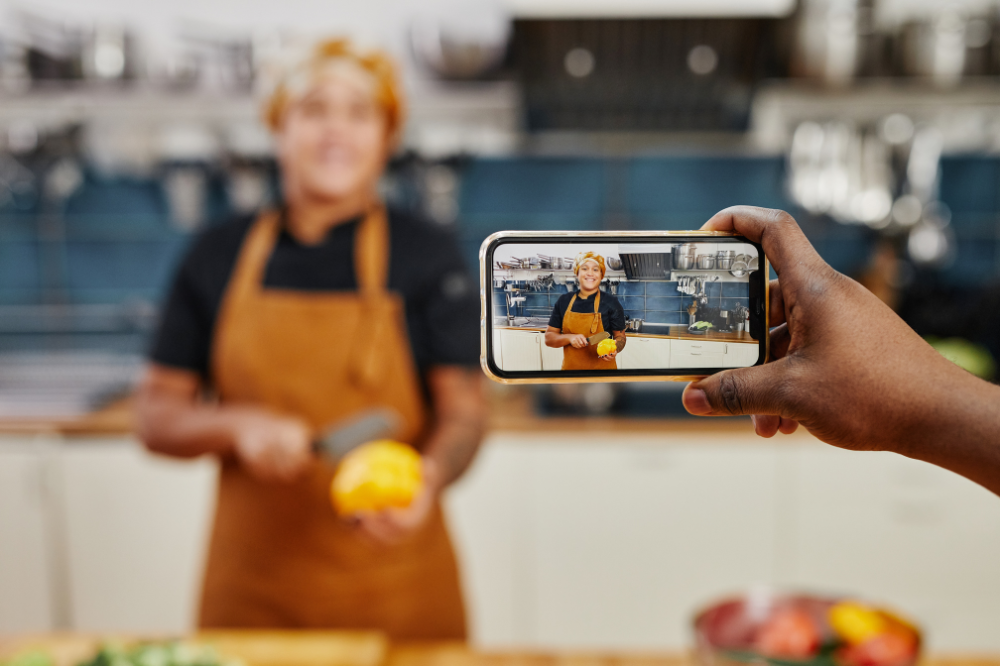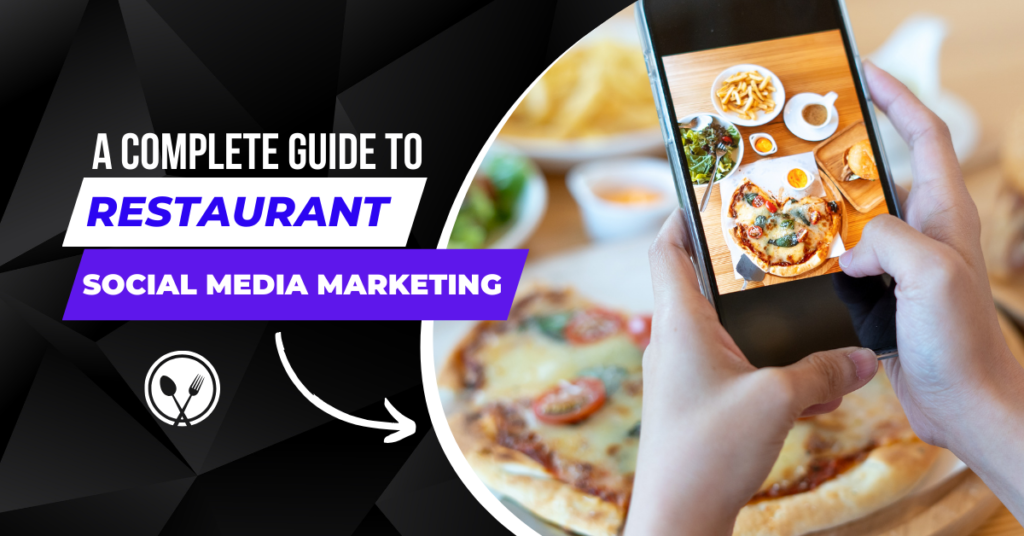A strong online marketing strategy is the key to a successful restaurant in the flavorful world of dining. Restaurant marketing strategies have expanded to embrace the dynamic realms of social media, going far beyond traditional advertisements in the ever-expanding digital landscape. A restaurant’s palette of promotional tools is enhanced by the alluring power of social media engagement, which also offers a feast of brand awareness and customer interaction. You can create a mouthwatering online presence that attracts both casual diners and foodies by adding the rich flavors of Facebook, Instagram, and Twitter to your marketing mix. Join us as we share the secret to successful online marketing for restaurants.
Understanding the Role of Social Media in Restaurant Branding

Social media has developed into an effective instrument for the restaurant business, significantly influencing the way patrons view and engage with their preferred dining establishments. In a world where stories and images command the majority of consumers’ attention, developing a compelling brand identity and creating social media storytelling that works are not only advantageous tactics but also vital components of visual marketing.
Defining Your Brand on Social Platforms
More than just catchphrases and logos, developing a social media brand identity for your restaurant is about distilling the core of its mission and core values. A Forbes marketing study states that communicating these components on all of your social media platforms can help you differentiate your restaurant from the competition and carve out a niche that appeals to your target market. Emphasizing authenticity and cohesion in branding ensures that each interaction with customers reflects the core of your restaurant’s character.
Storytelling Through Visual Content
When it comes to hooking a potential diner’s interest, few methods are as effective as visual storytelling. Insights from Social Media Examiner highlight the engaging power of photos and videos, which can vividly communicate your brand’s story, showcase your gastronomic delights, and depict the atmosphere your restaurant provides. Utilizing visual content effectively ignites the senses and emotions of viewers, fostering a strong connection with your culinary world and driving customer engagement.
Identifying the Right Social Media Platforms for Your Restaurant
Selecting the best social media platforms for your restaurant can be just as important as designing the menu. The vast landscape of social media offers different flavors to savor, each with its own audience demographics and marketing potential. Making informed platform selection decisions is imperative to achieve successful Instagram marketing for restaurants and to create engaging content that resonates with the right audience.
Comparing the Big Players: Facebook, Instagram, Twitter
Data from the Pew Research Center offers invaluable insights into social media demographics, helping restaurants navigate through the top platforms. Facebook’s extensive user base makes it a universal staple for online marketing, while Instagram, with its visually enticing layout, has proven to be an essential tool for Instagram marketing for restaurants. Twitter, on the other hand, offers rapid engagement and powerful hashtag campaigns, benefiting time-sensitive promotions and real-time customer interactions.
- Facebook: Ideal for a broad audience and targeted ads.
- Instagram: Best for visual storytelling and engaging a younger, food-focused demographic.
- Twitter: Great for instant engagement and sharing quick updates.
Niche Networks and Emerging Platforms
In addition to the heavyweights, articles from TechCrunch highlight emerging social platforms that offer niche appeal. These channels can be leveraged for platform selection by forward-thinking restaurants aiming to tap into specific markets or food communities for targeted reach and visibility. Exploring these options can often provide a competitive edge and foster a loyal following within select demographics.
Note that the right platform for your restaurant might not be the one with the largest user base, but the one where your target audience is most engaged and receptive to your culinary narrative.
Creating a Content Strategy for Your Restaurant

Navigating the bustling landscape of restaurant digital marketing strategy requires a masterful blend of creativity and organization, particularly in the realm of content marketing for the culinary world. A meticulously crafted content strategy stands as a cornerstone for engaging potential diners and cultivating a robust online community. It not only showcases a restaurant’s vibrant ambiance and delectable dishes but also communicates the unique narrative behind each culinary creation.
Content Types: From Posts to Stories and Beyond
Advancing beyond the conventional post format, restaurants today have a smorgasbord of content types at their disposal. The strategic utilization of different mediums, from tantalizing photos on Instagram to storytelling through Twitter threads, can amplify a brand’s voice in the crowded digital bazaar. Engagement can be significantly heightened by integrating a mix of live videos, behind-the-scenes stories, chef interviews, and user-generated content, infusing authenticity into social media planning.
- Instagram Carousels: Offer a virtual tasting menu of your dishes
- Facebook Live: Host cook-along with your chefs
- Twitter Polls: Let followers vote on new menu items
- YouTube Tutorials: Share the secrets behind your signature recipes
Planning an Editorial Calendar
Sustaining engagement with your audience on social media requires a steady and captivating presence. To gracefully and precisely navigate the gastronomic tides of social media, Hootsuite recommends cultivating an editorial calendar. By mapping out key dates, promotions, and content themes in advance, a restaurant can ensure its digital marketing strategy never goes stale. Here’s a basic weekly framework for a well-balanced editorial calendar:
| Day of the Week | Content Focus | Platform |
| Monday | Weekly Specials Alert | Facebook, Instagram |
| Wednesday | Behind-the-Scenes Story | Instagram Stories |
| Friday | Customer Shoutouts | Twitter, Facebook |
| Saturday | Chef’s Pick of the Week | Instagram, Pinterest |
| Sunday | Live Q&A Session | Facebook Live |
In essence, an effective content marketing strategy for your restaurant hinges on a harmonic balance between compelling content and strategic scheduling. Cultivating a digital footprint with a diversified content portfolio backed by robust social media planning ensures that your restaurant not only survives but thrives in the digital age.
Restaurant Social Media Marketing Best Practices
The landscape of restaurant marketing has been revolutionized by the power of social media, where engaging content, hashtag campaigns, and customer interaction play pivotal roles. Crafting exceptional, palate-enticing content tailored to the “foodie” audience is not just an art but a strategic maneuver, well-recognized by both Adobe and MarTech in their comprehensive insights.
To ensure your restaurant stands out on social media, a blend of creativity and strategic planning is essential. Utilize hashtags to extend your reach and do not underestimate the value of direct customer interaction to create a thriving online community around your brand. Below are key best practices curated to bolster your restaurant’s social media presence:
- Create content that resonates with food enthusiasts and tells your restaurant’s unique story.
- Launch hashtag campaigns that highlight special dishes, events, or promotions.
- Actively engage with your audience by promptly responding to comments and messages.
| Best Practice | Description | Benefits |
| Curated Visuals | High-quality images and videos of menu items and behind-the-scenes. | Increase engagement and showcase your menu’s appeal. |
| Hashtag Utilization | Use branded and trending hashtags to boost discoverability. | Expand visibility and connect with broader food communities. |
| Interactive Content | Interactive polls, quizzes, and user-generated content challenges. | Encourage customer participation and foster brand loyalty. |
| Customer Service | Immediate response to inquiries and feedback on social platforms. | Build trust and a positive reputation for attentive service. |
Integrating these practices into your online marketing for restaurants is more than a trend—it’s a necessity to thrive in the competitive culinary landscape of social media where every click, like, and share can translate into a loyal customer walking through your doors.
Engaging with Your Restaurant’s Social Media Audience
The digital era has made customer service and online reputation management fundamental aspects of running a restaurant. With every like, share, and comment, your social media community can be the cornerstone to success or a path to public relations challenges. How your restaurant engages with online feedback and fosters community interaction can significantly influence your brand’s perception. Implementing responsive communication strategies and hosting interactive events are pivotal in nurturing a loyal audience.
Responding to Reviews and Messages
Recent studies have stressed the importance of swiftly addressing customer feedback online. It not only demonstrates your appreciation for client feedback, but it also enhances the perception of your restaurant’s dedication to providing high-quality service. Whether it’s a positive, five-star review or a critical, constructive criticism, responding to reviews is essential to building relationships with customers and maintaining your restaurant’s online image.
- Monitor all platforms regularly to not miss any customer interactions.
- Personalize your responses to show genuine consideration for customer feedback.
- Resolve issues promptly and publicly when appropriate, to demonstrate accountability and transparency.
Building Community Through Discussions and Events
Creating a vibrant social media community revolves around more than responding to direct interactions. Engage your patrons with lively discussions about your menu, specialty dishes, or food sourcing. Capitalize on technology, as suggested by Eventbrite case studies, to promote events that can spark excitement and foster a sense of belonging among your customers. Such initiatives can transform casual diners into dedicated brand advocates.
- Host regular Q&A sessions to involve your audience in menu planning or to share behind-the-scenes insights.
- Promote exclusive events, like chef’s table experiences or seasonal tastings, to build excitement.
- Encourage user participation through themed contests or food photography challenges on your pages.
Leveraging User-Generated Content in Your Marketing Strategy

For restaurants looking to capitalize on the persuasive power of social proof and digital word-of-mouth, embracing user-generated content (UGC) can be revolutionary. Restaurants can enhance their credibility and attract potential customers by presenting real customer experiences that speak to them personally.
Encouraging Customer Check-Ins and Tags
To cultivate a thriving online presence, restaurants can encourage visitors to check-in or tag the location in their social media posts. These digital endorsements act as personal recommendations that cascade to a wider audience, subtly persuading friends and followers to consider your establishment for their next culinary escapade.
- Create a visually appealing, check-in friendly ambiance, prompting patrons to capture and share.
- Offer incentives for guests who tag the restaurant in posts, perhaps with a special discount on future visits.
- Display your social media handles prominently within your premises to enhance digital engagement.
Featuring Customer Stories and Reviews
User reviews and stories are potent forms of content that can shape your restaurant’s narrative. The emotional connect these stories forge not only foster enduring brand loyalty but also steer newcomers through your doors. A consistent influx of genuine reviews is the cornerstone of a robust digital word-of-mouth strategy.
- Highlight positive reviews on social media to showcase customer satisfaction and build trust.
- Invite patrons to share their dining experiences, creating an archive of compelling stories.
- Ensure swift and sincere interaction with reviewers to maintain an active and engaged community.
Aggregating and featuring UGC can be streamlined using a carefully structured approach:
| Action | Method | Expected Outcome |
| User Check-Ins | Incentivize and remind customers to check-in via signage and staff suggestion. | Increased discoverability and social media footprints. |
| Tags and Mentions | Create branded hashtags and encourage their use in customer posts. | Consolidated brand presence and user engagement. |
| Customer Reviews | Set up a feedback station and prompt via follow-up emails. | Amplified credibility and consumer confidence. |
Utilizing Social Media Advertising to Reach New Patrons
In the highly competitive restaurant industry, creating tailored advertisements on social media platforms can significantly widen your customer base. Especially with social media’s advanced targeting options, restaurants are now capable of reaching their ideal audience more efficiently than ever before.
Demographic Targeting for Ads
When diving into targeted advertising, the use of demographic targeting is vital for crafting effective Facebook ads for restaurants. It’s not just about reaching a large number of people; it’s about reaching the right people. Facebook Business provides comprehensive tools that enable you to target customers by age, location, interests, and behavior, ensuring that your ads are seen by individuals who are most likely to be interested in your restaurant.
Creating Engaging Advertisements with High Conversion Potential
Engagement is the currency of the digital marketing world and paid social campaigns that resonate with the audience tend to deliver the highest conversion rates. According to insights from AdEspresso by Hootsuite, an engaging ad does more than just sell – it tells a compelling story, showcases mouth-watering imagery, and offers an irresistible call to action. By focusing on what makes your restaurant unique and employing best practices from successful case studies, you can craft advertisements that not only captivate but also convert.
- Analyze your audience to identify your ideal customer profile.
- Utilize high-quality visuals and appealing offers that align with your brand identity.
- To find the ad format and copy that most appeals to your target demographic, run A/B tests on them.
Measuring the Success of Your Social Media Efforts
In the dynamic realm of restaurant marketing strategies, deploying your campaign is just the first step. Vigilantly tracking analytics for social media is fundamental to understanding the efficacy of your efforts. By utilizing comprehensive tools like Google Analytics, you gain access to an array of marketing metrics that provide clear insights into what resonates with your audience. Key performance indicators (KPIs) such as reach, engagement rates, and conversion rates serve as quantifiable touchstones that determine the pulse of your campaigns.
Determining the ROI on social campaigns is pivotal for optimizing your strategies and ensuring that you are making impactful investments. Social Media Today expounds upon numerous indicators crucial for gauging success, ranging from lead generation statistics to the more nuanced measurements of customer sentiment. By considering these metrics, you can develop an agile marketing strategy that can quickly change course and adjust to your target market’s constantly shifting tastes and habits.
With these insights and analytical tools at their disposal, restaurants can move forward with data-driven strategies that go far beyond simple guesswork regarding customer engagement. They offer a robust framework for refining content, enhancing customer interactions, and ultimately, leveraging the power of social media platforms to foster a burgeoning patronage. With meticulous analysis and strategic adjustments based on concrete data, the potential for growth in your social media initiatives can be fully realized.
FAQ
What makes social media marketing important for restaurants?
Restaurants need to use social media marketing because it increases brand awareness, fosters direct communication with customers, and enhances customer engagement. To remain competitive and draw in new business, these elements are crucial in today’s digital environment, according to the National Restaurant Association.
How should restaurants interact with consumers on social platforms?
Restaurants should engage with their patrons by posting interesting content, leaving thoughtful comments, and striking up discussions. According to Sprout Social’s analysis, customers develop trust and loyalty through genuine interactions on a variety of social media platforms.
Why is brand identity important on social media for restaurants?
A restaurant’s brand identity aids in setting it apart from rival establishments. Having a strong social media presence is essential for restaurants because it communicates their ethos, values, and aesthetics, making them more recognizable and appealing to potential patrons.
How does visual storytelling impact a restaurant’s social media presence?
Visual storytelling effectively conveys the restaurant’s history, atmosphere, and culinary experiences through excellent images and videos. These elements boost customer engagement and can drive more diners to a restaurant.
How do demographics influence platform selection for restaurant social media marketing?
Social media users’ demographic profiles play a role in platform selection. By identifying the platforms that their target audience uses most frequently, restaurants can better target their social media efforts to reach those particular user groups, according to data from the Pew Research Center.
What should a restaurant’s content strategy include?
A restaurant should use a variety of content formats in its content strategy, including stories, posts, and live events. A restaurant’s overall social media presence can be improved by tailoring to the preferences of various audiences.
How important is an editorial calendar for social media planning?
A regular posting schedule requires careful planning and upkeep, which requires an editorial calendar. According to Hootsuite, these calendars help guarantee that content is timely, diverse, and in line with larger marketing initiatives.
What are some best practices for creating engaging content on restaurant social media accounts?
Engaging content should be high-quality, visually appealing, and relevant to a “foodie” audience. Using hashtags can also help increase the visibility of posts.
How should restaurants handle online reviews and customer messages on social media?
Timely and professional responses to reviews and messages are key in managing a restaurant’s online reputation.
What are the benefits of user-generated content for restaurants?
User-generated content (UGC) enhances credibility and showcases real customer experiences. TINT’s report suggests that UGC, such as customer check-ins, tags, and reviews, acts as social proof and can influence the dining decisions of potential customers.
How can social media advertising be used to attract new patrons?
Social media advertising, with demographic targeting and engaging creative content, can effectively attract new customers. Insights from Facebook Business demonstrate how specific targeting can improve the relevance and performance of ads for restaurants.
What metrics should restaurants track to measure social media success?
Restaurants should monitor key performance indicators such as engagement rates, follower growth, and conversion metrics. Social Media Today and Google Analytics both provide methodologies for measuring and understanding the impact of social media efforts on a restaurant’s success.
